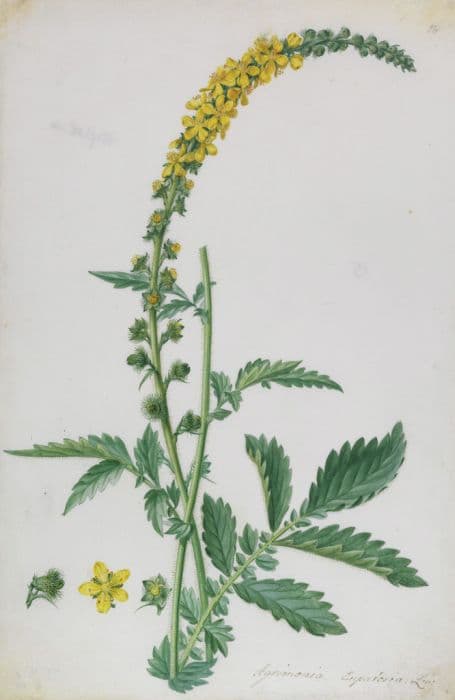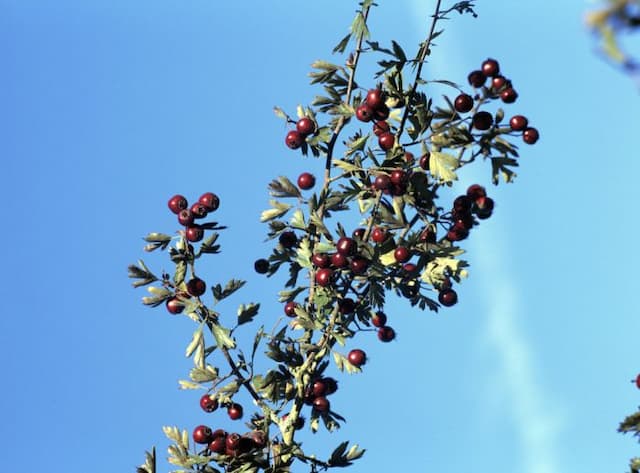Cherry Laurel Prunus laurocerasus 'Otto Luyken'

ABOUT
Commonly known as cherry laurel, 'Otto Luyken' is an evergreen shrub that is particularly noted for its compact and spreading habit. It features glossy, dark green leaves which are narrow and lance-shaped. The foliage tends to be dense and can have the appearance of being leather-like, providing a lush, thick presence throughout the year. During the spring season, cherry laurel produces eye-catching spikes of small, fragrant, cup-shaped flowers. These flowers are typically creamy white, which starkly contrast with the dark green foliage, creating a striking visual effect. The flowers have the potential to attract pollinators such as bees. As the flowering season ends, this plant may produce small berries. Initially, the berries are red, but as they mature, they turn to a dark, almost black hue. These fruits can provide interest in the garden, as well as food for local wildlife, although they are inedible to humans and are considered poisonous if ingested. Overall, cherry laurel 'Otto Luyken' has a sleek and refined appearance, with its evergreen leaves giving it a year-round attractiveness. This particular variety typically presents a tidy and well-maintained look, suitable for a variety of landscaping purposes, from borders and hedging to specimen planting.
About this plant
 Names
NamesSynonyms
Cherry Laurel, English Laurel, Otto Luyken Laurel, Common Laurel, Skip Laurel
Common names
Prunus laurocerasus 'Otto Luyken'.
 Toxicity
ToxicityTo humans
Cherry Laurel is toxic if ingested due to compounds like cyanogenic glycosides. When chewed or damaged, these compounds can release cyanide. Symptoms of poisoning may include difficulty breathing, weakness, headaches, dizziness, nausea, vomiting, and even convulsions or coma in severe cases.
To pets
Cherry Laurel is also toxic to pets. The plant contains cyanogenic glycosides which, when ingested, can release cyanide into the animal's body. Symptoms of poisoning in pets include drooling, loss of appetite, difficulty breathing, abdominal pain, vomiting, diarrhea, weakness, and in severe cases, seizures, collapse, or even death.
 Characteristics
CharacteristicsLife cycle
Perennials
Foliage type
Evergreen
Color of leaves
Dark green
Flower color
White
Height
3 feet (0.91 meters)
Spread
6 feet (1.83 meters)
Plant type
Shrub
Hardiness zones
6
Native area
Southeast Europe, Southwest Asia
Benefits
 General Benefits
General Benefits- Low Maintenance: The Otto Luyken Cherry Laurel requires minimal care once established, making it ideal for busy gardeners.
- Dense Foliage: Its thick leaves provide excellent coverage for privacy screens and hedges.
- Shade Tolerance: It thrives in partial shade, making it a versatile choice for different garden spots.
- Groundcover: Its low-growing habit makes it suitable for use as a groundcover to suppress weeds.
- Drought Resistance: Once established, it is quite tolerant of dry conditions, requiring less frequent watering.
- Ornamental Flowers: Produces attractive spikes of white flowers in spring, adding aesthetic value to the landscape.
- Evergreen: Retains its foliage year-round, ensuring continuous greenery in the garden.
- Compact Size: Its relatively small size compared to other cherry laurels makes it suitable for smaller spaces.
- Wildlife Attraction: Flowers provide nectar for pollinators, while berries can attract birds.
 Medical Properties
Medical PropertiesThis plant is not used for medical purposes.
 Air-purifying Qualities
Air-purifying QualitiesThis plant is not specifically known for air purifying qualities.
 Other Uses
Other Uses- Privacy Screening: Otto Luyken can be planted in rows to create a dense, evergreen privacy screen that blocks unwanted views and noise.
- Topiary Art: The plant's dense foliage and ability to handle pruning make it suitable for shaping into topiary forms for ornamental garden displays.
- Windbreak: The thick growth habit of Otto Luyken can be used to form a windbreak, providing shelter from the wind for other plants or seating areas.
- Foundation Planting: Due to its controlled growth and attractive foliage, it is often planted near foundations to enhance the aesthetic of buildings.
- Erosion Control: Its extensive root system can help stabilize slopes and areas prone to erosion.
- Bonsai: Despite its usual size, Otto Luyken can be trained as a bonsai, making an interesting project for enthusiasts of miniature trees.
- Theme Gardens: This plant can be integrated into various themed gardens, such as Mediterranean or formal English gardens, for its structured appearance.
- Wildlife Shelter: The thick leaves and branches provide shelter for small wildlife, including birds and beneficial insects.
- Landscape Accent: Otto Luyken can be planted as a standalone specimen to accentuate landscape features or architectural details of a home or building.
- Container Gardening: Due to its moderate size, it can be grown in large containers to decorate patios, balconies, or other outdoor spaces.
Interesting Facts
 Feng Shui
Feng ShuiThe plant Cherry Laurel is not used in Feng Shui practice.
 Zodiac Sign Compitability
Zodiac Sign CompitabilityThe plant Cherry Laurel is not used in astrology practice.
 Plant Symbolism
Plant Symbolism- Protection and Shelter: Prunus laurocerasus 'Otto Luyken', commonly known as Cherry Laurel, has dense foliage that provides shelter and privacy in gardens, symbolizing protection and a safe haven.
- Victory: Cherry Laurels are related to the bay laurel, traditionally associated with victory and honor. In ancient Greece, victorious athletes were crowned with laurel wreaths.
- Renewal: As an evergreen plant, the Cherry Laurel symbolizes renewal and the continuity of life, remaining vibrant throughout the seasons.
- Peace: The green leaves of this plant are symbolic of peace and tranquility, often used in places for reflection and relaxation.
 Water
WaterThe Cherry Laurel or Otto Luyken Laurel should be watered deeply once a week during the first growing season to help establish a strong root system. Once established, they are quite drought-tolerant but will benefit from watering every 2 to 3 weeks during dry spells. In hot summer months or for container-grown plants, more frequent watering may be necessary. Generally, aim to provide the plant with about 1 to 1.5 gallons of water per watering session, ensuring the soil is moist but not waterlogged.
 Light
LightOtto Luyken Laurel prefers partial to full sun conditions, thriving best in a spot that receives at least 4 to 6 hours of direct sunlight daily. They can tolerate some shade, especially in hotter climates, but too much shade can lead to sparse foliage and reduced flowering.
 Temperature
TemperatureThe ideal temperature range for Otto Luyken Laurel is between 60°F and 80°F. They are hardy and can withstand temperatures as low as 0°F, making them suitable for growing in USDA hardiness zones 6 through 9. Avoid exposing the plant to prolonged temperatures above 95°F, as extreme heat can cause stress.
 Pruning
PruningPruning the Otto Luyken Laurel is necessary to maintain shape, encourage bushier growth, and remove any dead or damaged branches. It's best to prune in late winter or early spring before new growth starts. Pruning can be done annually or biannually, depending on the desired size and shape of the plant.
 Cleaning
CleaningAs needed
 Soil
SoilCherry Laurel requires well-draining soil with a mix of loam, peat, and sand; it thrives in slightly acidic to alkaline pH (6.0-8.0).
 Repotting
RepottingCherry Laurels are typically outdoor plants and do not require repotting; they should be planted in the ground and monitored for growth.
 Humidity & Misting
Humidity & MistingCherry Laurel prefers average humidity levels but is adaptable and can tolerate a range of conditions, excluding extreme wetness.
 Suitable locations
Suitable locationsIndoor
Place in bright indirect light, keep soil moist, and ensure good air circulation.
Outdoor
Plant in partial shade to full sun, ensure soil drainage, and shelter from strong winds.
Hardiness zone
6-9 USDA
 Life cycle
Life cycleCherry laurel 'Otto Luyken' starts its life as a seed, which, under appropriate conditions of warmth and moisture, germinates. After germination, seedlings emerge, developing a root system and foliage, as they enter the juvenile vegetative stage characterized by robust leaf growth. As the plant matures, it enters the adult vegetative state, growing to its full size and forming a dense, evergreen shrub with glossy, dark green leaves. During the spring, 'Otto Luyken' progresses to the flowering stage, producing clusters of fragrant white flowers, which are attractive to pollinators. Following pollination, the flowers give way to small, black, inedible fruit, representing the reproductive stage, and these fruits contain seeds that can disperse to begin a new life cycle. The plant then enters a period of dormancy in the colder months before resuming growth in the following spring.
 Propogation
PropogationPropogation time
Early Spring
The most popular method for propagating the Cherry Laurel 'Otto Luyken' is by semi-hardwood cuttings. This can typically be done in late summer to early fall. To propagate, choose a healthy stem that has started to mature but is not fully hardwood. Cut a 4 to 6-inch piece (10 to 15 cm), making sure it includes at least two sets of leaves. Remove the lower leaves to expose the nodes and dip the cut end into rooting hormone to increase the chance of success. Then, plant the cutting in a well-draining potting mix and keep it consistently moist. Place the cutting in a location with indirect sunlight and maintain a temperature of around 70 to 75 degrees Fahrenheit (21 to 24 degrees Celsius). Roots usually develop within 8 to 10 weeks.









